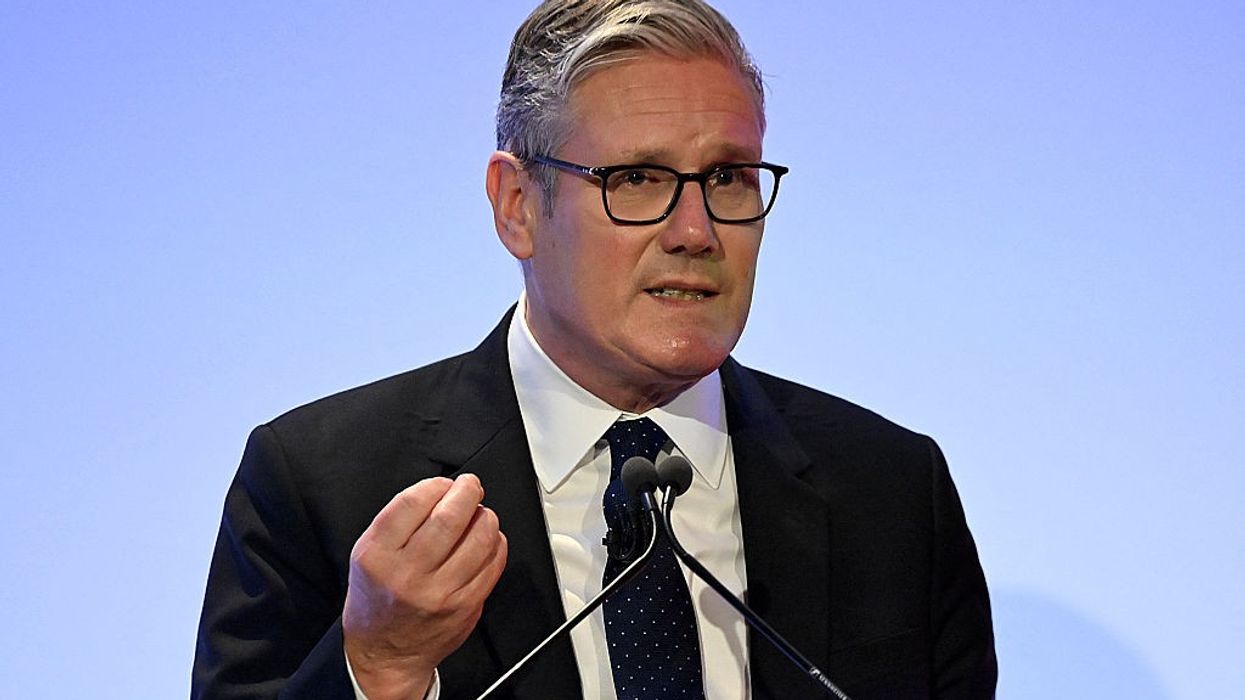by Nadeem Badshah
It is a muggy summer evening and a group of diners sit on benches to share pani puri shots and tuck into crunchy bhindi bhel.
The waiter serves a basket full of Romali rotis to have with minced lamb and chicken liver and there is not a poppadom or bowl of rice in sight.
This is not a restaurant in Delhi or Mumbai but Hankie’s in central London, one of a wave of new street food restaurants in Britain.
Experts say more Britons are moving away from fine dining to “casual dining” sharing dishes with friends, having more affordable meals – and eating with your hands without getting funny looks from other diners.
The change has been described by curry bosses as the biggest revolution the £4 billion industry has faced, with dozens of restaurants offering traditional street food opening in recent years around the country.
Speaking at Hankie’s, which opened in January, its patron chef Ani Arora told Eastern Eye: “I have been doing Indian food for 20 years.
“To do something fine [dining] is not in trend right now, people want more relaxed, casual, easy to eat, a fun place.
“India is so big, so much to pick out of it, there’s no limitations.”
And the boom is not limited to the capital, with Leeds hosting a restaurant week featuring street food eatery Bundobust and The Indian Streatery eatery set to open in Birmingham.
The Mowglis restaurant brand, run by former barrister Nisha Katona, is also planning to launch in Birmingham and Manchester after securing £3.5 million cash injection from private equity firm Foresight Group.
It has also spread to cookbooks with Chetna Makan, a contestant on BBC show The Great British Bake Off, focusing on street dishes for her latest collection of recipes called Chai, Chaat & Chutney released in August. And Zohra Khaku, who runs the Halal Gems restaurant website, hosted Britain’s biggest halal street food festival in Old Spitalfields market, east London, in July.
Some curry houses have been criticised for failing to change their menu from traditional meals like chicken tikka masala that first became popular in the UK in the 1970s.
But Delhi-born Arora, who came to the UK 17 years ago, said that label is no longer valid and the sector has revamped itself.
“If you asked me 10 years ago I would have said it is fair that they don’t change too much, but in the last decade, the change which is happening, the rising competition and the extent of innovation have all been phenomenal.
“Since 2007, iPad-armed customers have more information uploaded into everyone’s minds, they see a lot of things.
“Fifteen years ago, you go to a restaurant to try food. Now you can go on YouTube and blogs.”
Dishoom has been praised for sparking the trend in 2010 with its eateries paying homage to Mumbai cafes. It now has four branches in London and one in Edinburgh.
It has spawned other street food places including Kricket Soho, Gunpowder and Chit Chaat Chai.
Benares, an established restaurant in west London run by celebrity chef Atul Kochhar, also offers a street food sharing menu featuring pickled prawn pani puri, chicken tikka on crispy naan and a lamb kofta roll.
Kochhar, who was born in the Indian city of Jamshedpur, told Eastern Eye: “Growing up, street food was a speciality in my hometown, where dishes were typically eaten by hand.
“I often cook this style of food at home with my family, so it was really exciting to offer a causal and authentic dining experience with our customers, giving them a taste of the real Indian heritage, one that is still of Michelin starred standard.
“Every dish on the menu has been designed by each chef in the Benares kitchen and originates from a different region around India.
“As well as each region having their own recipes, they also have their own marinating techniques and valued tandoor traditions.”
Another new street food brand is Chai Naasto, which opened its third branch in Harrow, north London this summer.
Tilesh Chudasama, a founder of Chai Naasto, said street food is the biggest revolution the industry has seen.
He said: “One hundred per cent, everyone is on street food. Everyone is putting their own twist to it. It’s the best cuisine in England at the moment.”
Chudasama has gone from working as an IT university lecturer to launching Chai Naasto with his two brothers.
He said their food is inspired by their 75-year-old grandmother’s travels around Punjab, Kerala, Rajasthan and Hyderabad.
“She was born in Somalia and migrated to Yemen and makes the spices for us.
“Our nan looked after 14 grandkids. We love her food and used to take it as packed lunch for work.
“Our work colleagues tried it and said it was amazing. People used to buy it from us and said ‘you should buy a restaurant’ so me and my brothers got some money together.”
The casual trend has attracted the eye of international chefs.
Indian Accent, the award-winning Delhi restaurant led by Manish Mehrotra, is opening a branch in west London later this year.
Asma Khan launched restaurant Darjeeling Express in central London this summer single-handedly.
It offers street cuisine from Bengal, Bihar, Hyderabad and Western Uttar Pradesh where her father hails from including mutton kebab cakes and beef stew.
Khan said her most popular street snack is puchka.
“I think it’s the theatre of filling water in a fragile shell and trying to eat it without the shell exploding. People love it.”
Syed Ahmed, editor of Curry Life Magazine, said: “People are more adventurous now so restaurants are focusing on varieties on their menu.
“Here it is served in an environment where there is a no risk factor so you have the best of both worlds – the flavours of India in a posh restaurant like Dishoom.”
Four informal eateries to try:
HANKIES
The starters include bhindi bhel with a crunchy mix of okra, tomatoes, rice, mint and tamarind and a side dish of healthy kale, spinach and lotus puff. Mains include a large portion of sea bream and a lighter option of minced lamb with chicken liver, which goes well with the restaurant’s centrepiece of romali rotis, including a truffle variety with butter and cheddar.
CHAI NAASTO
The pav bhaji has a creamy sauce and soft bread in a fondue while the bite-sized paneer mirch pieces are addictive. The lamb chops are tender and smothered in a plentiful helping of sauce while the pani puri shots are traditional with plenty of pomegranate and chickpeas.
DARJEELING EXPRESS
The mutton shikampuri kebabs are flavoursome with a fluffy texture inside, while the chilli garlic prawns are in a home-cooked style with a spicy kick. The mains consist of a saucy beef stew and a drier goat Bengali curry. Its unique selling point of alternative dishes extends to the desserts with stewed apricots and cream.
BENARES
The five-course sharing menu includes a crispy spinach and onion bhajia and quinoa salad, a different take on prawn pani puri and a crispy naan that goes well with the chicken tikka. Also fried mackerel and salad, which has a strong smell and acquired taste; and a flavoursome lamb kofta roll, a Lucknow speciality.
















 Kulsuma Aktergetty images
Kulsuma Aktergetty images
Police may probe anti-Israel comments at Glastonbury